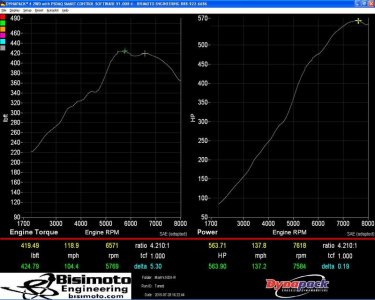When I spoke to a few guys the big reasoning for the 2300 was based on reducing the heat.
After studying the temperature vs rpm charts provided by Eaton (adjusted for the different sizes) I could see no advantage to either. However, I'd take issue with the published data.
Both use the same diameter rotors, however, the 2300 is longer which results in more CC per rev. One of the key engineering elements of a SCer is leakage between the rotor edge and housing. This leakage, call carryback, reduces both thermal and mechanical efficiency. By virtue of its longer rotors, the 2300 by definition has more "area" to allow leakage.
In addition, the slower you spin it the more time there is for leakage to occur. Again, given the same flow the 2300 should theoretically leak more because its spinning slower.
There's also a critical relationship between rotor speed and the "ground effect" turbulence created between rotor and housing. This turbulence helps "seal" the two and reduces leakage. Based on my CFD simulations, spinning a 1900 faster than the 2300 also helps in this respect.
I can't find a "drive hp" map for the 2300 (I did find one for the 1900), but in general HP required is related to flow and pressure requirements and to a lesser extent, friction. Here again, given the same boost the 2300 has more rotor surface area to which the boost pressure acts against (try's to spin it backwards) which increases the HP required.
These are just some of my reasons for selecting the 1900 over the 2300 for my performance goals. If I wanted to make 650plus, I'd have chosen the 2300 as the 1900 simply can't flow that much.



![IMG_0828[1].jpg](/data/attachments/94/94853-7f3bdaa3a1a48793ad7fbe66a3fc4444.jpg)



